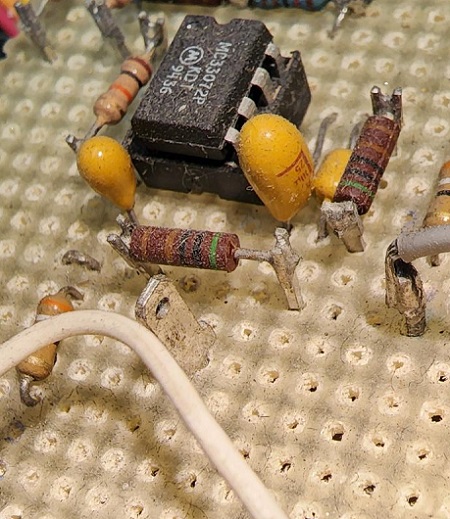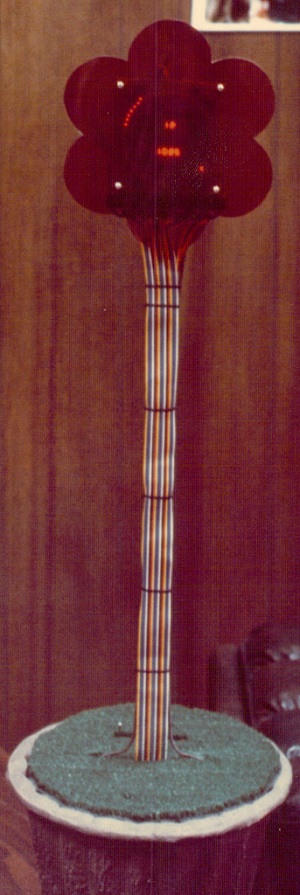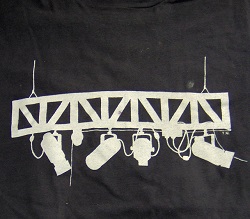RIKLBLOG
|
| Tomorrow |
| 10 September 2022 |
| Yesterday |
| Index |
| Eventide |
| SETI League |
| PriUPS Project |
| Bonus! |
| Contact |


I Was Debating Titles
Either The Missing Clocks of Eventide or, taking after the Hardy Boys, The Mystery of the Missing Clocks.
I haven't decided yet, although I will have by the time you see this.
Not Just an FAQ, a VFAQ
Putting on my Commerce Hat for moment, but not to tout any product, I want to elucidate the Very Frequently Asked Question that is at the top of the list in our emails, forums, and interviews. It is this: How did Eventide get its name? As one of the founders of the company, I have answered this question in person, in writing, on podcasts, audio, and soon on video. For those with the sense not to click on endless links, the answer is simply:
1: We needed a name
2: Nobody came up with anything good
3: I suggested Eventide Clockworks because I used to build digital clocks in the evening while at work.
My co-founders reluctantly acquiesced. But when those in our present-day social media juggernaut petitioned me for reminiscences, both verbal and photographic, I realized that I had not a single photograph of the digital clock circuitously responsible for our original name! Although I'm fairly certain none remain extant, given how pregnant with history and obsolete hardware these clocks were, I thought I'd relate
The Story Behind Them.
I begin with a confession: Being in only my early dotage, my memory is generally sound. However, after about 55 years, I hope the other participants in this project will forgive me if I don't remember who they all were**. One participant I do recall well: It was Joe Shapiro, my buddy and our Advertising Man. Joe claimed to have some expertise with Plexiglas and monomethyl methacrylate, and, for his part, would do the final assembly of the clocks. My job was to procure the parts and hand-wire them. (The quantity was too low for a printed circuit board to be manufactured.) I had plenty of spare time since my employment at the time consisted of pressing buttons when I was cued to do so by the pointing finger of a disk jockey. Each (average) three-minute record that played as the result of that button-press allowed a couple more diodes to be soldered into their matrix. You want technical details?
Technical Details
"Perf board" was the basis of many electronic project prototypes. It's a flat piece of Masonite with a lot of holes in it. You put electronic components on one side of the board and their wire leads through the holes. Soldering the components' leads together or connecting them with wires on the back of the board allowed one to build a device that would approximate the size and function of a printed-circuit board without the printing or chemicals, and so required no time waiting to try something out. If you want to build one or two of something, this was the way to do it. One or two hundred? It's cheaper and faster to use printed circuits. To make numbers on a seven-segment display, a diode matrix had to be wired to select the segments for each digit. For example, to display the number 8 all the segments had to be illuminated and seven diodes were needed; a 7 required only three. Since the clock had hours, minutes, and seconds, six matrices were needed, along with a transistor being driven with an integrated circuit counter chip per digit. That's a lot of diodes! That's the bad news. The good? One could purchase bags of diodes at the surplus stores in downtown Manhattan for $.99. With hundreds of diodes carefully inserted in perf board and wired together, one had a way to display the time. (I've spared you the details of how these clocks actually knew what time it was.) Such was the way things got built back in the '60s. Lots of spare time, solder fumes, masonite, and glue. And diodes. |
 |
When I Blurted Out Eventide Clockworks at Our Naming Conversation,
this is what I had in my alleged mind. All those overnight shifts connecting diodes together with ICs, a transformer, and other components to make one of those newfangled digital clocks. They were getting cheaper by the year and now have essentially replaced mechanical clocks to the extent that the word clockwise has become meaningless to younger folk. Don't believe me? Try to rotate an image in Windows 7 and you'll find a menu item "rotate clockwise." Windows 10 replaced it with "rotate right." And widdershins? Forget it!
Am I Done With Clockworks Pre-History?
May the dropped clockworks finally be laid to rest? Not quite. There's another clock in our history, and, while it had nothing to do with our name, it has a lot to do with our history. About two years after The Naming, by which time we were actually a corporation manufacturing products, paying bills and taxes, and providing jobs, a fellow turned up in our place of striving seeking gainful employment of the engineering persuasion. Although I was later to compose a battery of questions that seriously attempted to discern a candidate's qualifications, my initial question to him, as I recall, was "Do you know how to solder?" I think he claimed he could, so I suggested a practical test involving building—wait for it:
A Digital Clock
That clock, too, has physically vanished, but we were sufficiently flush in those days that we could afford to take at least one photo*** and, here it is. I have a lot of memories of this clock and its progenitor. The main reason is that said progenitor, who ended his audition with "Will you keep me?" remains at Eventide as my partner after 50 years and is, in large part, responsible for the success of the enterprise. OK, NOW are you done?Yes! But you're not. I have left room here for a guest blog from Tony Agnello, the clock's creator. His guest blog will show up when he gets around to it. I'm sure you've heard that "Nature abhors a vacuum." but I've heard no wisdom with regard to "white space," so I counsel us all to patience. (Maybe he'll even have a few words about Italy, about which tourism report I'm being dilatory. At least, as you can see, I have selected a title for this blogitem.)
When I first met Richard, he said that he had an idea for a novel digital clock and suggested that I might try to design it. It was late 1972 and the world was still analog; the word ‘digital’ had not yet become part of our daily lexicon. There were no personal computers, the CD was still a decade away and watches were mechanical; they had ‘hands.’ The first digital watch was introduced in 1972 and sold for ~$15,000 (in today’s dollars). Digital clocks and watches were a novelty made possible thanks to two titanic, and related, technological advances; Light Emitting Diodes (LEDs) and Integrated Circuits (ICs). It was still the early days though; only red LEDs existed and ICs were primitive. Texas Instruments had recently introduced a family of simple digital ICs, the famous 7400 TTL series which included logic gates, counters, and flip-flops. Richard had an ample supply of these parts since he was using them to build his Digital Delay Lines. At the time, designing a run-of-the-mill digital clock was rather straightforward for a competent hobbyist. The fact that AC power in the US is 60 cycles per second was rather convenient given that there are 60 seconds per minute and 60 minutes per hour. With a handful of logic gates, counters and seven-segment LEDs, anyone with access to these newly available parts and a soldering iron could build their very own digital clock and, in fact, DIY clocks were all the rage among hobbyists. But have I mentioned that Richard’s idea was novel? He wanted something more interesting than a simple digital display of the time of day. He wanted something exciting, something animated, something that would grab one’s attention. That something could only be a Flower Clock! A flower with a circle of 60 LEDs surrounding the digital time display. And he wanted to have the 60 LEDs animated in two ways; he wanted to see a light spinning around each second while a single LED stepped along the circle one second at a time. The ‘challenge’ was to design the logic to multiplex the display along with the ‘usual’ digital clock circuitry and a power supply sufficient to achieve this ‘light show.’ With access to Richard’s supply of TTL chips and LEDs, Eventide’s basement workshop, and the surplus shops on Canal Street, I had all the parts that I needed. It was just a question of how best to put the thing together. The power supply was one issue. Switching supplies were not yet available and so the power circuitry was analog – basically a large, heavy military surplus transformer, rectifiers and big capacitors. I decided to package the supply and most of the TTL circuitry in a flowerpot and run a ribbon cable up to the ‘flower.’ The flower held the display and the circuit board with the multiplexing circuitry and a handful of transistors to drive the 60-LED circle and the four seven-segment LEDs that displayed the time. Of course, the ‘flower’ needed petals and so I used a jig saw to carve a piece of red plexiglass. As a finishing touch, I added some lovely green Astroturf to cover the flowerpot’s circuitry. Fortunately my nascent soldering skills were up to the task, I knew how to handle a jig saw without drawing much blood and the darn thing got built and worked. It proudly sat in Richard’s office for a few years before magically (or mysteriously?) vanishing. |
 |
Tomorrow: Italy. I Hope!
* This was our original name. We dropped the Clockworks when we moved to New Jersey in 1984. Watch the video for sound effects.
** I have some candidates whom I shall try to contact but have little hope given the time elapsed.
*** In contrast to today's idiotic profligacy.
| © 2022 |
| Richard Factor |
NP: "Black Mourning Band" The Honeybus |
( |
ToTD Maybe not as collectible as Clair Brothers, but no doubt obtained under the same circumstances. This one is from Stage Rigging Inc. |
|
